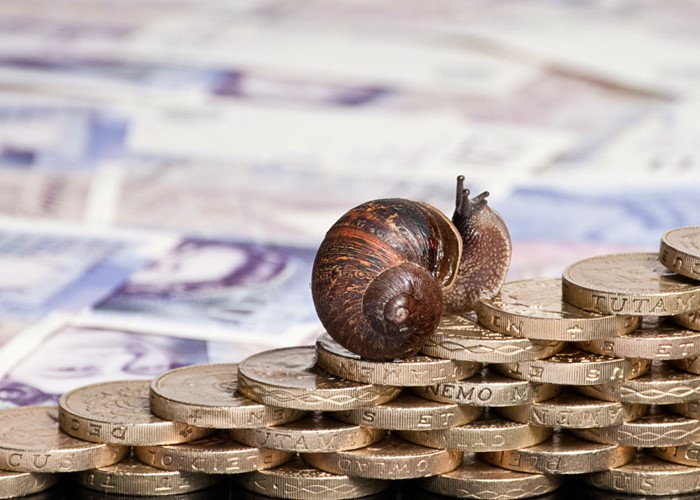Increase your ISA return by 15 times

Here's how one saver - Cliff D'Arcy's father - turbo-charged his tax-free ISAs by shopping around!
After more than four decades in the British Armed Forces, my father retired last year. To supplement his pensions, he started looking for ways to maximise his other income without taking risks, for example, by paying less tax or earning higher returns on his savings accounts.
By taking a few simple steps, he was able to increase the returns he will receive on his ISA by 15 times! Here’s how he did it.
Loyalty is for dogs
My parents have been with the same bank for at least 20 years. What's more, being a soldier, my father has always understood the value of loyalty.
However, as I keep reminding him, when it comes to financial products, this loyalty often comes at a price...
The 'bait and switch' trick
Take, for example, my parents' cash ISAs, which they've built up over several years. Most of these tax-free accounts are held with their high-street bank. Then again, in recent years, my father has taken to shopping around, before opening Best Buy cash ISAs with the top-paying providers.
Nevertheless, my father still fell foul of one of the banks' sneakiest tricks: the 'bait and switch' trap. This happens when banks, building societies and other savings providers launch new accounts paying table-topping headline rates of interest. 'Hot money' duly pours in from savers and, once their targets are hit, the providers withdraw these accounts.
Later, behind the scenes, the providers slyly slash the interest rates paid by these withdrawn accounts. Fairly soon, these savings accounts go from being Best Buys to Don't Buys.
A pathetic 0.25% a year
With the Bank of England's base rate stuck at a record low of 0.5% a year since March 2009, savings rates have slumped over the past 2½ years. Even so, my father was stunned to find that the ISAs he'd accumulated were earning absolutely pitiful rates of interest. In some cases, he was earning a mere 0.25% a year on some hefty sums.
Alas, inflation -- the rising cost of living -- is currently running at 5% a year, using the Retail Prices Index. In other words, £1,000 in savings a year ago would need to have grown to £1,050 today to have the same buying power as it did in June 2010.
By earning 0.25% on his savings, my father has received a measly £2.50 for every £1,000 on deposit. In other words, the 'real' value of his money (after inflation) has been shrinking for at least 12 months and probably longer.
Playing the transfer market
When I explained that his bank and other ISA providers were ripping him off, my father was pretty cross, to say the least.
Hence, he vowed to transfer his existing cash ISAs into table-topping accounts. To do this, he needed to instruct his new providers to transfer across his existing ISA accounts. He couldn't simply withdraw all his ISA cash and open new ISAs, as he'd lose his previous years' ISA allowances.
With ISA season in full swing. John Fitzsimons looks at what you should consider before going for your first account
Hence, he went online to look for the highest rates of interest paid by cash ISAs, finding rates ranging from 3% to 5% among the Best Buys.
Initially, my father had planned to spread his money between several different savings institutions. However, several ISA providers (notably Barnsley BS) were hopeless when it came to online transfers. It is incredibly frustrating for savers keen to switch accounts to be confronted with dead and missing links, non-existent ISA transfer forms, and other glitches.
On the other hand, my father found that a few banks were very keen to win his custom. In particular, multiple ISA transfers to Northern Rock went ahead without a hitch, thanks to a 'simple and completely trouble-free' transfer process, according to D'Arcy Senior.
A big boost
Although the paperwork and processes involved in switching ISA providers were a bit of a pain at the time, my father is very pleased with the final outcome.
As a result of switching his tax-free cash into top-paying ISAs, he has fixed his yearly interest rate at around 4% for several years. Thus, the amount of interest he makes on each £1,000 has soared to £40 a year -- all tax-free, of course. As a result, he will be at least £1,500 a year better off following his incursion into the ISA transfer market.
Therefore, I'd urge you to learn a lesson from my father by keeping a close eye on your savings rates. If your bank or building society is taking you for a ride, then simply vote with your feet by ditching and switching today.
By shifting your savings, you could turbo-charge your ISAs through transfers, just as my father did!
More: Start saving for a brighter future | Why big savers may be at risk | How to create an infinite income
Comments
Be the first to comment
Do you want to comment on this article? You need to be signed in for this feature